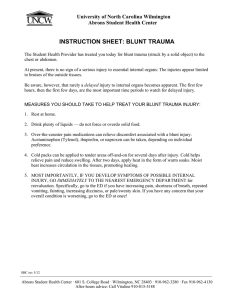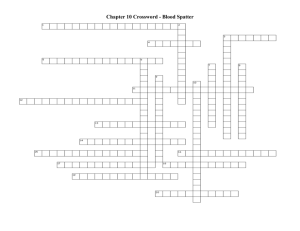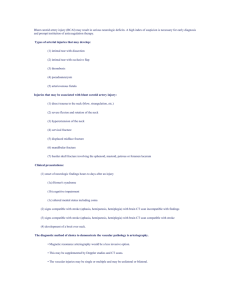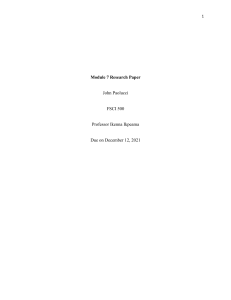Forensics Study Guide FALL FINAL
advertisement
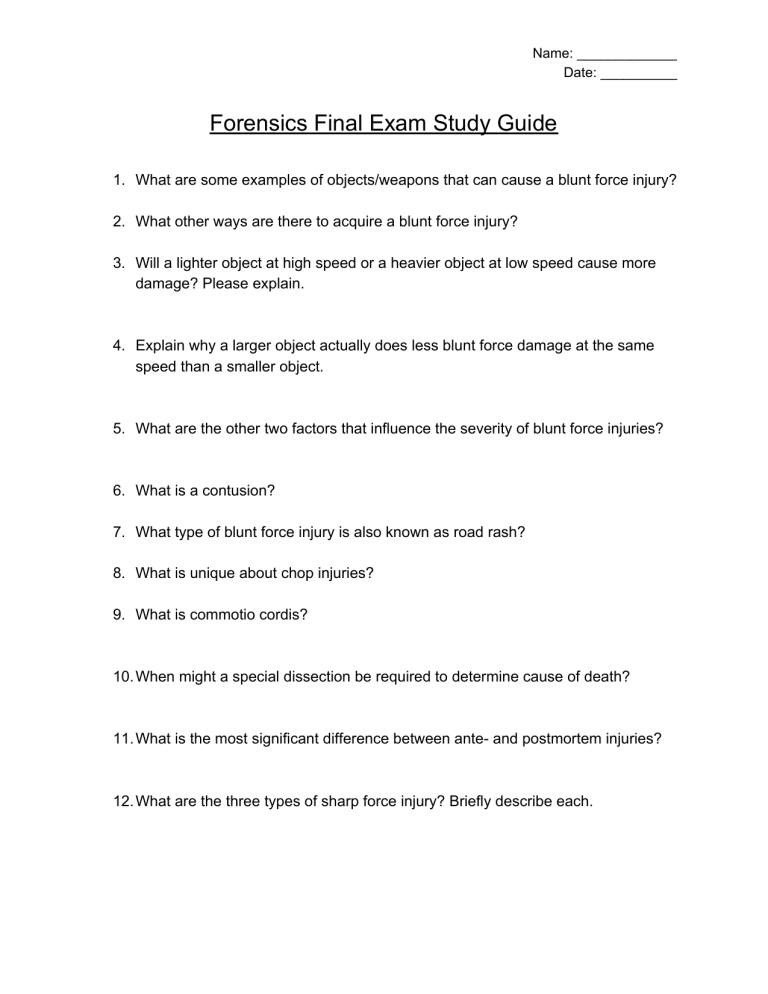
Name: _____________ Date: __________ Forensics Final Exam Study Guide 1. What are some examples of objects/weapons that can cause a blunt force injury? 2. What other ways are there to acquire a blunt force injury? 3. Will a lighter object at high speed or a heavier object at low speed cause more damage? Please explain. 4. Explain why a larger object actually does less blunt force damage at the same speed than a smaller object. 5. What are the other two factors that influence the severity of blunt force injuries? 6. What is a contusion? 7. What type of blunt force injury is also known as road rash? 8. What is unique about chop injuries? 9. What is commotio cordis? 10. When might a special dissection be required to determine cause of death? 11. What is the most significant difference between ante- and postmortem injuries? 12. What are the three types of sharp force injury? Briefly describe each. Name: _____________ Date: __________ 13. In reference to sharp force injury, what are margins? What are angles? 14. Why might hair/fibers or fluids (besides blood) be found on the victim of a sharp force injury? 15. Describe the different methods used to explain the directionality of a sharp force injury. 16. What is a perforated injury? 17. What might defensive wounds look like/consist of? 18. What sort of mark is left on the skin from a blade/weapon that went into the skin as far as was possible? 19. Name all possible information a bloodstain pattern analysis can provide. 20. What causes a blood drop to maintain a spherical shape? 21. What is the difference between blood spatter and blood transfer? 22. Describe the way that circular spatter size changes in low force impact scenarios. 23. How are medium force impact spatters typically made? Name: _____________ Date: __________ 24. What is the angle of impact of this blood spatter? Please show all work. 25. What is backspatter? 26. Please explain the two phases of bloodstain analysis. 27. How is the area of convergence determined? 28. How is the area of origin determined?
